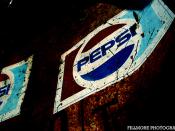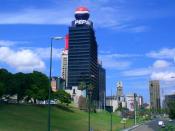Without the proper planning, a crisis can take an organization by surprise. Center and Jackson (2003) state, "even sudden emergencies of crisis proportion can be anticipated - if not avoided - so risk management, issue anticipation, and crisis communication programs have become an important part of public relations technology" (p. 319). This purpose of this paper is to analyze and evaluate the effectiveness of communication among the Pepsi organization and its publics.
When organizations are dealing with a crisis "there are two basic types of crises, depending on the amount of warning time: a sudden crisis, which comes without warning, and a smoldering crisis, which is generally not known internally or externally until it goes public . . ." (p. 321). In the case "There's a syringe in my Pepsi!" a consumer, in Tacoma, Washington, claimed to have found a syringe in his unopened Pepsi can. This was quickly followed by similar claims across the country.
These incidents made it necessary for Pepsi to launch an immediate public relations campaign in order to stop rumors and panic from consumers and employees.
The first thing that Pepsi did was to make managers as well as top executives available to the media to assure the external as well as internal public the safety of the company's products. In a bold move Pepsi decided not to pull their product from shelves believing that the allegations were false and there was no way a foreign object could make it into any of their cans during the canning process. Pepsi also created a strong communication bond with the Federal Drug Administration (FDA). Neither the FDA nor the company could find any reasoning for how a foreign object could get into a Pepsi can during the canning process.
Pepsi allowed the local bottler Alpac...



Double standards?
I do not see the pepsi company doing this in India. Recently the court ordered them to reveal their recipe due to accusations of a high toxic level in the drink... I am not sure about this as I heard it on the radio quite some time back..
0 out of 0 people found this comment useful.